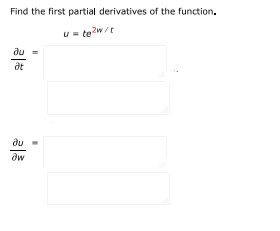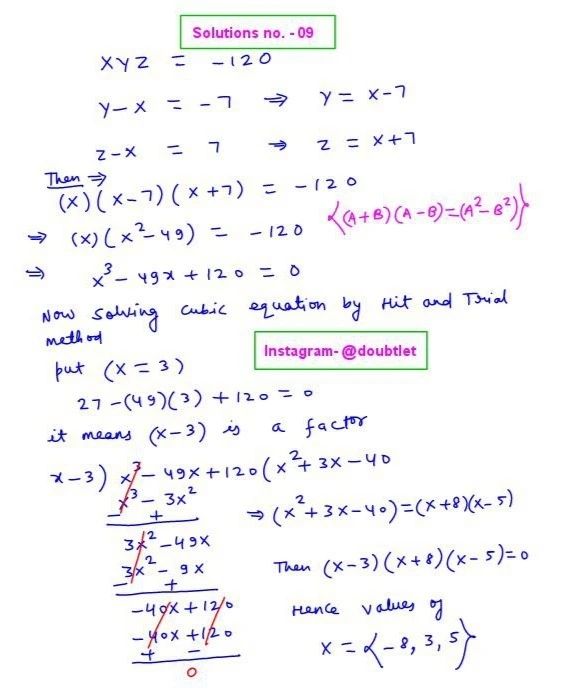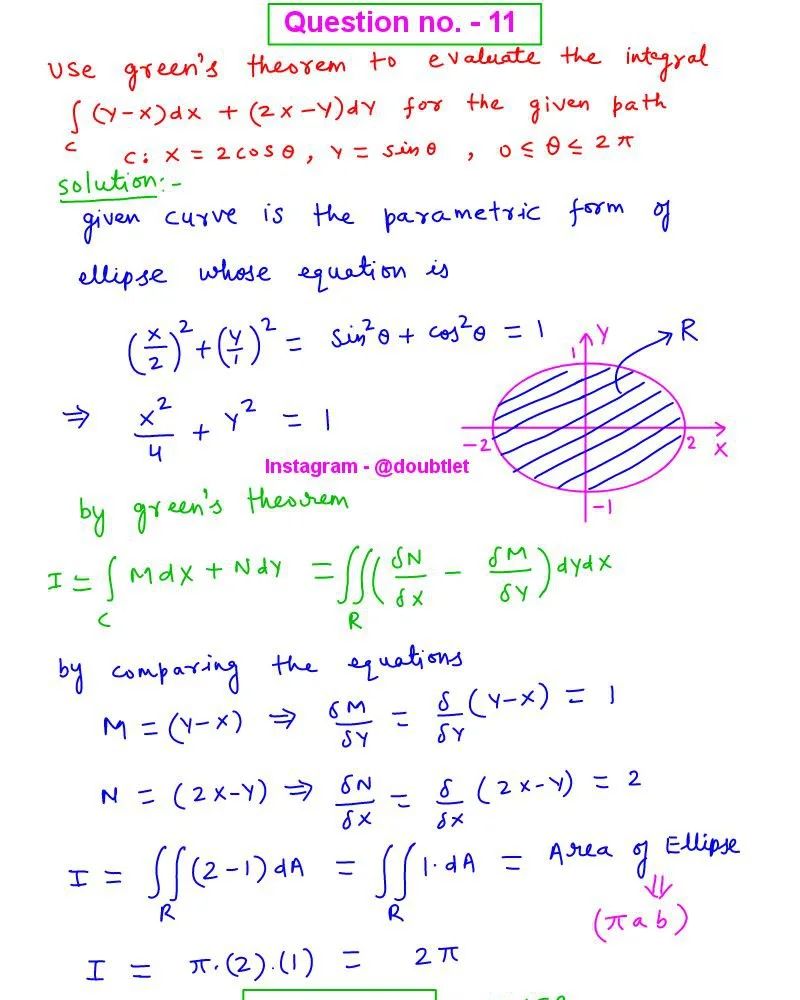
Neetesh Kumar | December 3, 2024
Calculus Homework Help
This is the solution to Math 1D
Assignment: 14.3 Question Number 15
Contact me if you need help with Homework, Assignments, Tutoring Sessions, or Exams for STEM subjects.
You can see our Testimonials or Vouches from here of the previous works I have done.
Get Homework Help
Step-by-step solution:
Step 1: Partial derivative of u with respect to t
To find ∂t∂u, treat w as constant and differentiate u with respect to t:
u=tet2w.
Using the product rule:
∂t∂u=∂t∂(t)et2w+t∂t∂(et2w).
-
For the first term:
∂t∂(t)et2w=et2w.
-
For the second term, differentiate et2w using the chain rule:
∂t∂(et2w)=et2w⋅∂t∂(t2w).
The derivative of t2w with respect to t is:
∂t∂(t2w)=−t22w.
Thus:
∂t∂(et2w)=et2w⋅(−t22w).
Combine both terms:
∂t∂u=et2w−t2wet2w.
Factorize:
∂t∂u=et2w(1−t2w).
Step 2: Partial derivative of u with respect to w
To find ∂w∂u, treat t as constant and differentiate u with respect to w:
u=tet2w.
Differentiate with respect to w:
∂w∂u=t⋅∂w∂(et2w).
Using the chain rule:
∂w∂(et2w)=et2w⋅∂w∂(t2w).
The derivative of t2w with respect to w is:
∂w∂(t2w)=t2.
Thus:
∂w∂u=t⋅et2w⋅t2.
Simplify:
∂w∂u=2et2w.
Final Answers:
∂t∂u=et2w(1−t2w)
∂w∂u=2et2w
Please comment below if you find any error in this solution.
If this solution helps, then please share this with your friends.
Please subscribe to my
Youtube channel for video solutions to similar questions.
Keep Smiling :-)















Leave a comment